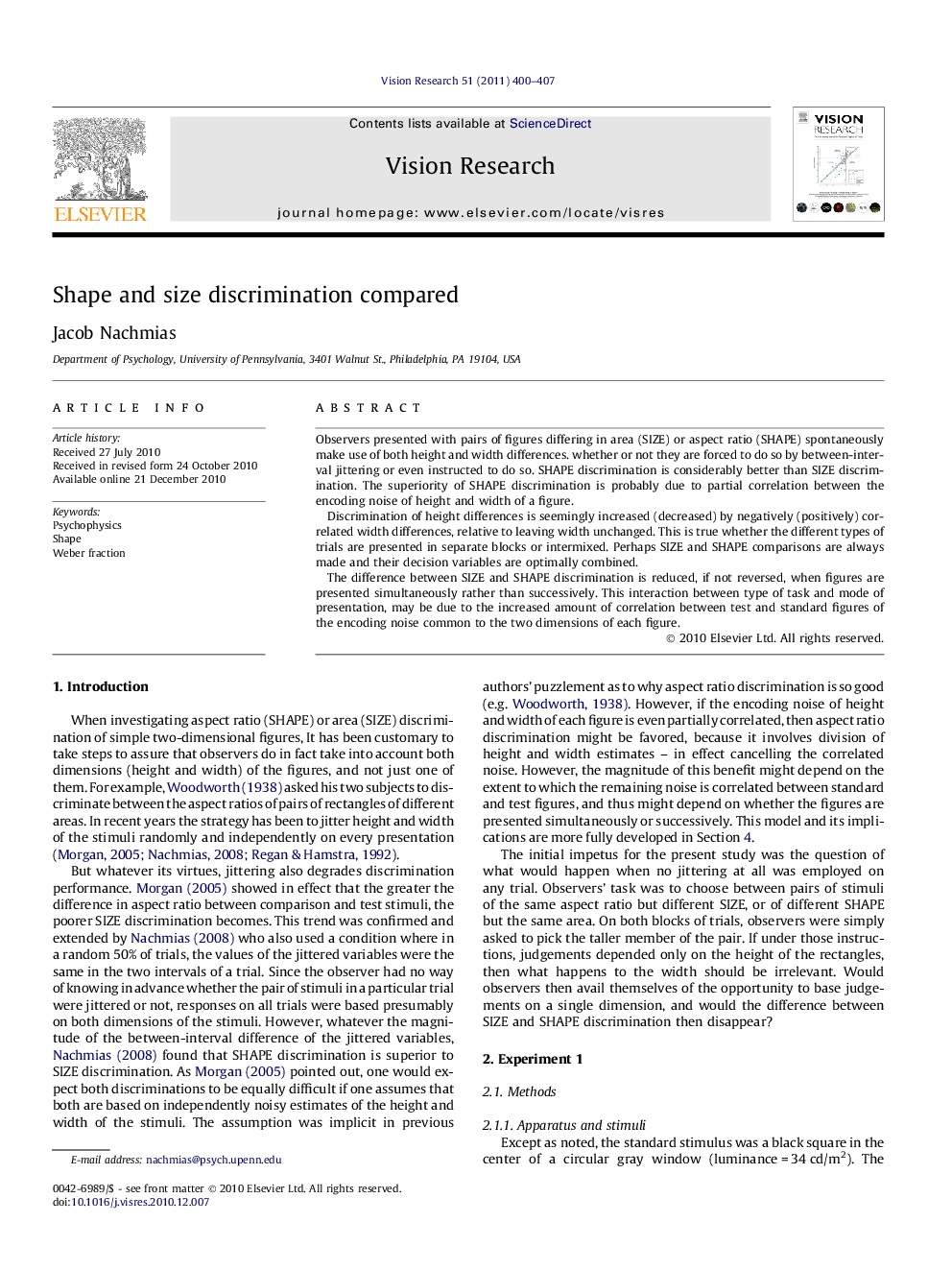| Article ID | Journal | Published Year | Pages | File Type |
|---|---|---|---|---|
| 4034236 | Vision Research | 2011 | 8 Pages |
Observers presented with pairs of figures differing in area (SIZE) or aspect ratio (SHAPE) spontaneously make use of both height and width differences. whether or not they are forced to do so by between-interval jittering or even instructed to do so. SHAPE discrimination is considerably better than SIZE discrimination. The superiority of SHAPE discrimination is probably due to partial correlation between the encoding noise of height and width of a figure.Discrimination of height differences is seemingly increased (decreased) by negatively (positively) correlated width differences, relative to leaving width unchanged. This is true whether the different types of trials are presented in separate blocks or intermixed. Perhaps SIZE and SHAPE comparisons are always made and their decision variables are optimally combined.The difference between SIZE and SHAPE discrimination is reduced, if not reversed, when figures are presented simultaneously rather than successively. This interaction between type of task and mode of presentation, may be due to the increased amount of correlation between test and standard figures of the encoding noise common to the two dimensions of each figure.
Research highlights► Spontaneous use of both height and width in judging figures differing in SIZE or SHAPE. ► SHAPE discrimination superior, whether or not trials are in separate or mixed blocks. ► In simultaneous presentation, SHAPE_SIZE difference reduced. ► Correlation of encoding noise and combined decision variables account for most aspects of data.
